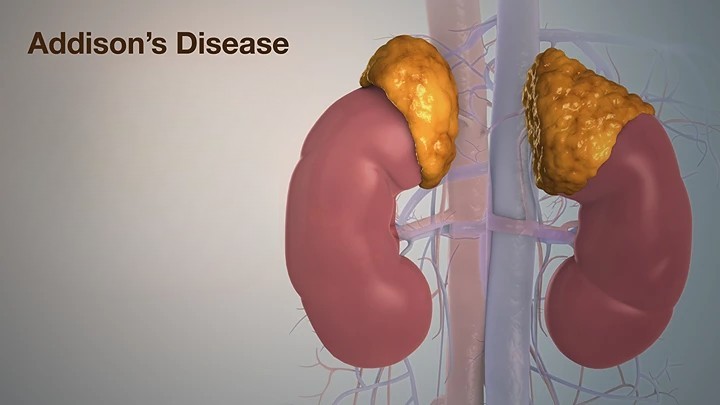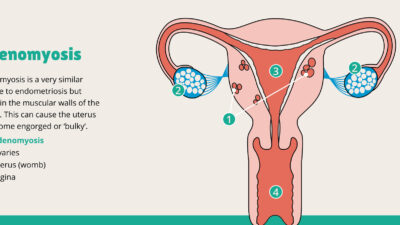What is Addison’s Disease?
Addison’s disease, clinically known as primary adrenal insufficiency, is a rare but serious disorder where the adrenal glands fail to produce sufficient cortisol and aldosterone. These essential hormones regulate vital functions including metabolism, blood pressure, and stress response. Affecting approximately 1 in 100,000 people globally, this condition often develops gradually, making early detection challenging yet critical for effective management.
Table of Contents
Addison’s Disease Symptoms
Common Early Symptoms
- Persistent fatigue and weakness (most common symptom)
- Unexplained weight loss and decreased appetite
- Low blood pressure leading to dizziness or fainting
- Hyperpigmentation (darkening of skin, especially in scars, elbows, and knees)
- Salt cravings due to aldosterone deficiency
- Gastrointestinal issues: nausea, vomiting, diarrhea
- Muscle and joint pain
Advanced Symptoms and Addisonian Crisis
Without treatment, symptoms can progress to an Addisonian crisis – a life-threatening medical emergency characterized by:
- Severe abdominal pain
- Extreme weakness and confusion
- Very low blood pressure
- Loss of consciousness
- Abnormal electrolyte levels
| Early Symptoms | Advanced Symptoms |
|---|---|
| Fatigue | Severe dehydration |
| Mild dizziness | Extremely low blood pressure |
| Minor skin darkening | Significant hyperpigmentation |
| Occasional nausea | Persistent vomiting |
| Salt cravings | Electrolyte imbalance |
Causes and Risk Factors
Primary Causes
- Autoimmune Disorders (70-90% of cases) – Immune system attacks adrenal glands
- Infections – Tuberculosis, HIV, fungal infections
- Genetic Factors – Certain gene mutations (e.g., DAX1, AIRE)
- Cancer – Metastasis to adrenal glands
- Medications – Long-term steroid use then abrupt withdrawal
Who’s at Risk?
- Women are more frequently affected than men
- People aged 30-50 years
- Those with other autoimmune conditions (type 1 diabetes, thyroid disorders)
- Certain genetic predispositions
Diagnosis and Testing
Diagnostic Process
- Medical History Review – Symptom assessment and family history
- Physical Examination – Checking for hyperpigmentation, low blood pressure
- Blood Tests:
- Electrolyte levels (low sodium, high potassium)
- Cortisol levels (low)
- ACTH levels (high in primary Addison’s)
- ACTH Stimulation Test (gold standard) – Measures adrenal response to synthetic ACTH
- Imaging Tests – CT scan to examine adrenal gland size/structure
Interpreting Test Results
- Low morning cortisol (<5 mcg/dL suggests insufficiency)
- Increased ACTH levels
- Blunted response to ACTH stimulation test
- Adrenal antibodies present in autoimmune cases
Addison’s Disease Blood Test Results
- Low cortisol levels – especially after an ACTH stimulation test
- Low sodium and high potassium levels – a hallmark of Addison’s disease
- High ACTH levels – showing the pituitary is trying to stimulate the adrenal glands but failing
- Sometimes, imaging (CT/MRI) may be used to look at the adrenal glands.
Treatment
Conventional Medical Treatment
- Hydrocortisone (cortisol replacement) – 15-25 mg daily in divided doses
- Fludrocortisone (aldosterone replacement) – 0.05-0.2 mg daily
- Emergency Preparedness:
- Steroid injection kit for crises
- Medical alert bracelet
- Stress-dose steroids during illness
Lifestyle Management
- High-sodium diet to maintain electrolyte balance
- Regular meal schedule to prevent blood sugar drops
- Stress management techniques (yoga, meditation)
- Adequate hydration and sleep
Monitoring and Follow-up
- Regular blood tests for electrolyte and hormone levels
- Annual check-ups with endocrinologist
- Blood pressure monitoring at home
Addison’s Disease in Dogs
Interestingly, Addison’s disease affects dogs with similar symptoms:
- Common in breeds: Standard Poodles, Portuguese Water Dogs, West Highland White Terriers
- Symptoms: Lethargy, vomiting, weakness, shaking
- Diagnosis: ACTH stimulation test
- Treatment: Similar hormone replacement therapy
How I Cured My Addison’s Disease ?
Technically, Addison isn’t “curable” since adrenal damage is permanent. But many patients share inspiring personal stories on how they managed symptoms effectively, regained energy, and lived normal lives with treatment and lifestyle adjustments.
Some describe dietary improvements, stress management, and consistent medication as their “cure.”
Living Well with Addison’s Disease
While receiving an Addison’s disease diagnosis can be overwhelming, most patients achieve excellent quality of life with proper management. Key strategies include:
- Consistent medication adherence
- Regular medical follow-ups
- Stress management
- Emergency preparedness
- Patient education and support groups



